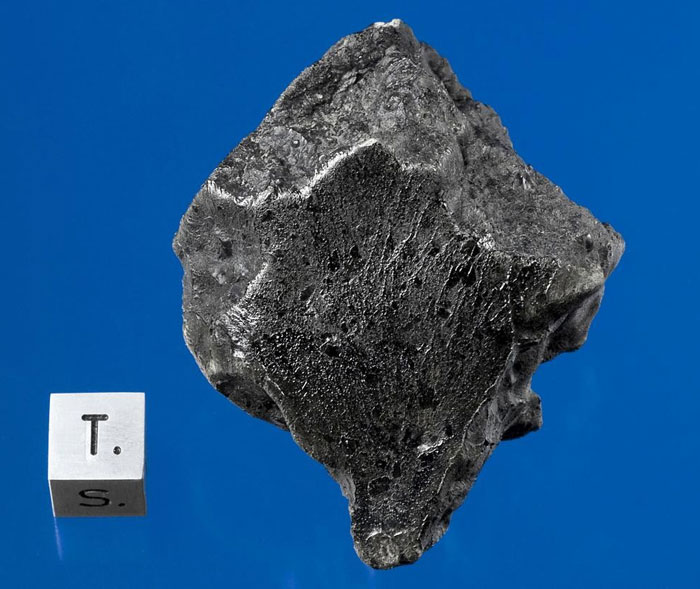Rock from Mars falls to earth
A meteorite plunged into North Africa in July last year and scientists confirmed yesterday that the stone was once part of Mars.
>>> Imitation crystal won nobel prize and meteorite model
AP reported that many people saw a meteorite burning in the sky in North Africa in July last year, but it was not until the end of December that scientists discovered its fragments at a place near Foumzgit city. of Morocco. The total mass of rock pieces is found to be about 7kg. The largest stone has a mass of more than 1kg.
This is a rare and important opportunity for the scientific community to learn about the geological features of Mars - the planet is thought to be able to nourish life. A special panel of international experts, including many scientists from the US Aerospace Agency (NASA), was established to determine the origin of the rock pieces. Yesterday they confirmed they were from Mars.

A piece of rock is found in Morocco.
One theory is that a few million years ago a large object hit Mars, causing the red planet's matter to spill out everywhere in the solar system. After a long journey in the universe, some meteorites from Mars crash into the earth's atmosphere and break into pieces.
Most rocks from Mars fall to Antarctica or deserts. If you include meteors in Morocco, humans only discovered 5 meteors from Mars on the planet. Earlier meteorites were seen from Mars in France in 1815, in India in 1865, in Egypt in 1911 and in Nigeria in 1962. Total mass of meteors from Mars on Earth is 110kg. They are the rarest rocks on the planet, so they are worth more than gold.
Until now, spacecraft have not obtained any physical samples from Mars. So meteorites from Mars are the only material that humans have to study the red planet.
Jeff Grossman, a NASA scientist, said it was very likely that he and his colleagues would discover 'something interesting' about Mars during the study of rocks in Morocco because they had just fallen. globe.
A meteorite discovered in Antarctica became the hot topic of the American and world media in 1996. At that time, NASA scientists announced that the meteorite contained many traces of life from Fire. Even the White House declared the piece of rock the first sign of extraterrestrial life. But many studies later concluded that scientists do not have enough evidence to prove the authenticity of the White House statement.
- Discovering rocks on Mars has the same composition in Earth
- Discovered 'coffin' on Mars
- Did the ocean on Mars get into the rock?
- NASA ships find gray stones on the surface of Mars
- Fans are excited to discover the ancient gods on Mars
- The Earth-like continent may have existed on Mars
- How is Mars different from Earth?
- How to bring Martian stones to Earth?
- How valuable is the rock from Mars?
- NASA robots detect precious clues about life on Mars
- Mars once existed drinkable water
- 'Message' from the fourth meteorite on Mars
 Van Allen's belt and evidence that the Apollo 11 mission to the Moon was myth
Van Allen's belt and evidence that the Apollo 11 mission to the Moon was myth The levels of civilization in the universe (Kardashev scale)
The levels of civilization in the universe (Kardashev scale) Today Mars, the sun and the Earth are aligned
Today Mars, the sun and the Earth are aligned The Amazon owner announced a secret plan to build a space base for thousands of people
The Amazon owner announced a secret plan to build a space base for thousands of people